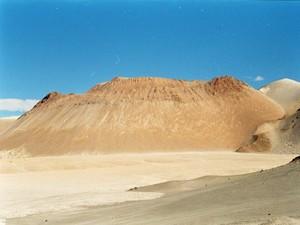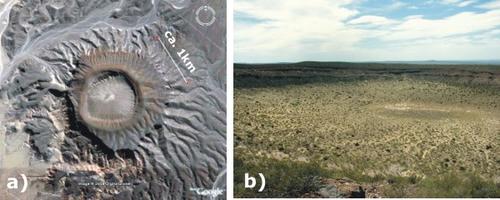Types of Volcanoes: Volcanic lava dome and Maars
Rhyolitic domes on the margin of the Caldera Cerro Blanco, Argentina
Image Credit: MBG
a) Satellite image of the ring tuff, Cerro Solo Maar, Neuquen, Argentina. b) General view of the same ring tuff.
Image Credit: Google Earth; Marcelo Arnosio
Volcanic lava dome
Viscous magma of mainly dacitic to rhyolitic composition with sometimes pancake-like lava flows form short, rounded, steep-sided volcanic lava domes. Due to their high viscosity, such magmas do not move far from the vent before cooling and crystallizing.
Lava domes grow episodically and often refill a collapsed area slowly, which might have even been the result of an growing dome. Dome growth may last several years, producing one to many different lava flows, changing its form, growth velocity, extrusion rate and stability. The collapse of a volcanic lava dome often triggers pyroclastic flows.
Maar
Maars are short-lived, often single explosive events related to volcanic forms with an almost circular low-angle relief crater. Maars are often filled with water. The diameter rarely exceeds a diameter of more than several hundred meters. This type of volcano is formed by shallow explosive eruptions due to the interaction of invading magma with the groundwater, creating large volumes of steram. The Eifel volcanic field in Germany counts with some eighty maars in a relatively small area.

